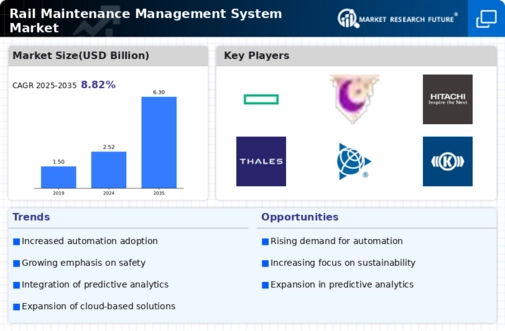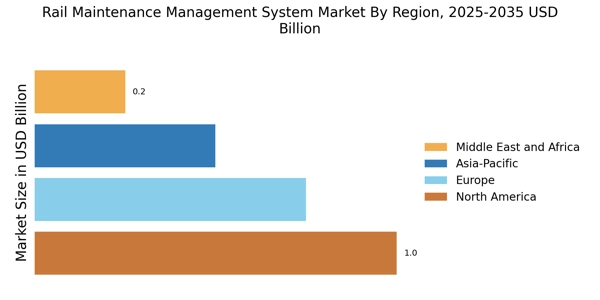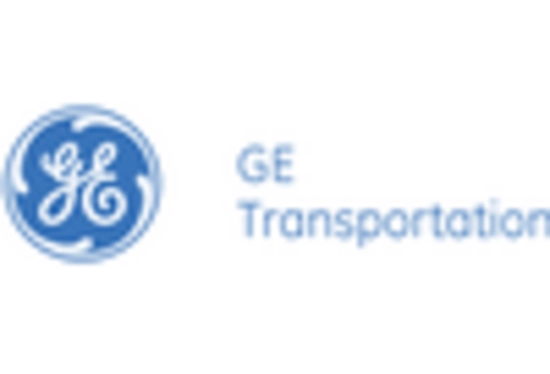Growing Demand for Efficient Rail Networks
The Rail Maintenance Management System Market is driven by the growing demand for efficient and reliable rail networks. As urbanization accelerates, the need for effective public transportation systems becomes paramount. Rail networks are increasingly viewed as a sustainable alternative to road transport, leading to heightened investments in rail infrastructure. Data indicates that rail passenger traffic is projected to grow by 4% annually, necessitating robust maintenance systems to support this growth. Consequently, the Rail Maintenance Management System Market is likely to expand as operators seek to enhance the reliability and efficiency of their rail services.
Regulatory Compliance and Safety Standards
The Rail Maintenance Management System Market is significantly influenced by stringent regulatory compliance and safety standards. Governments and regulatory bodies are increasingly mandating higher safety protocols for rail operations, necessitating the adoption of advanced maintenance management systems. Compliance with these regulations not only ensures safety but also enhances operational efficiency. For instance, the implementation of automated reporting systems can streamline compliance processes, reducing the administrative burden on rail operators. As a result, the demand for sophisticated Rail Maintenance Management Systems is expected to rise, as companies strive to meet these evolving regulatory requirements.
Increased Investment in Rail Infrastructure
The Rail Maintenance Management System Market is witnessing increased investment in rail infrastructure, which is a key driver for market growth. Governments and private entities are allocating substantial funds to upgrade and expand rail networks, recognizing the importance of rail transport in economic development. This influx of investment is expected to create a favorable environment for the adoption of advanced maintenance management systems. Reports indicate that infrastructure spending in the rail sector is anticipated to reach unprecedented levels, further stimulating the demand for Rail Maintenance Management Systems that can support these expansive projects.
Technological Advancements in Rail Maintenance
The Rail Maintenance Management System Market is experiencing a surge in technological advancements that enhance maintenance practices. Innovations such as predictive analytics, Internet of Things (IoT) sensors, and artificial intelligence are being integrated into maintenance systems. These technologies enable real-time monitoring of rail assets, allowing for timely interventions and reducing downtime. According to recent data, the adoption of IoT in rail maintenance is projected to increase efficiency by up to 30%. This shift towards technology-driven solutions is likely to reshape the Rail Maintenance Management System Market, as stakeholders seek to leverage these advancements for improved operational performance.
Focus on Cost Reduction and Operational Efficiency
The Rail Maintenance Management System Market is propelled by a focus on cost reduction and operational efficiency. Rail operators are under constant pressure to minimize operational costs while maximizing service quality. Implementing advanced maintenance management systems can lead to significant cost savings by optimizing maintenance schedules and reducing unplanned outages. Studies suggest that effective maintenance strategies can lower operational costs by up to 20%. This emphasis on efficiency is likely to drive the adoption of Rail Maintenance Management Systems, as companies seek to streamline their operations and enhance profitability.


















Leave a Comment